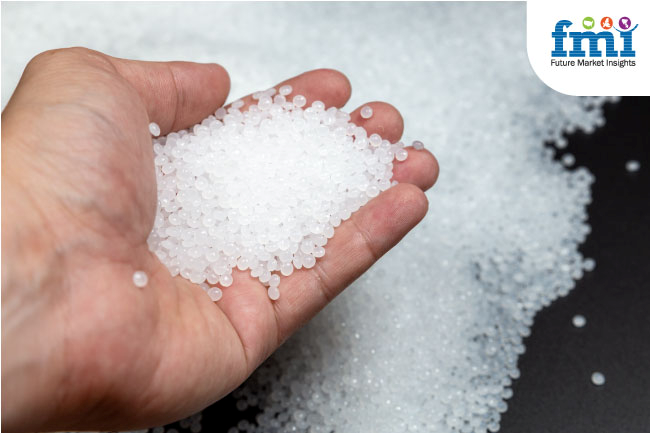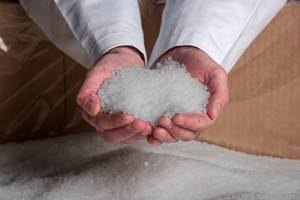Plastic Compounding Market to Outpace Metal & Alloy Market Growth
Study shows the plastic compounding process is being used to boost electrical properties and UV resistance while custom compounding is increasingly being used to achieve high-performance in plastic-based goods.

The global plastic compounding market is set to witness an impressive growth rate of 7.4% from 2022 to 2032, while the market size is anticipated to reach a valuation of about $163.9 billion from its current valuation of $64.8 billion. This according to Plastic Compounding Market to Overshadow the Metal and Alloy Market in Coming Days, a new report from London-based Future Market Insights, a provider of market intelligence and consulting services, serving clients in over 150 countries, with delivery centers in the U.S. and India. Other key takeaways:
▪ The plastic compounding industry is anticipated to grow significantly as metals, natural rubber, wood, glass, and concrete are increasingly replaced by plastic.
▪ Based on various product forms, polypropylene compound is the highest-grossing sector of the target market, with an estimated total share of 25% in 2022.
▪ The most common application of plastic compounding is automotive components, which reportedly held 20% of market share in 2022, and where plastics are increasingly outpacing use of metals and alloys.
▪ The Asia Pacific region was indicated as the dominant region for plastics compounding in 2022, with a market share of over 40%.
According to the study, among current trends poised to propel plastic compounding growth by 2032 are the growing market for biopolymers, novel retail goods packaging methods, and uses for 3D printing or manufacturing techniques. Plastic usage in transportation components is expected to increase significantly over the projected timeframe due to rising sales of personal and commercial vehicles. These developments are anticipated to drive the demand for plastic compounding in the future.
In addition to automotive and aircraft, luxury items, consumer electrical & electronics equipment, construction, and medical are a few of the end-user industries that are to significantly boost the worldwide plastic compounding market trends. Consumption of thermoplastics is anticipated to grow at a rapid rate over the forecasted period.
Meanwhile, demand for products made from biobased materials has increased due to both environmental issues related to hydrocarbon-based plastics and the global depletion of crude oil supplies. The report notes that anticipated government limits on the use of petrochemical-based plastics in many end-use sectors would further encourage the plastic compounding market future trends for the production of biobased polymers.
When compared to their petroleum-based rivals, plastic compounds generated from biobased materials such as PLA (polylactic acid), PHA (polyhydroxyalanote) and PBS (polybutylene succinate) exhibit outstanding biocompatibility. Goods made from these compounds are frequently used for agricultural and medicinal purposes and are significantly supplementing the plastic compounding market key trends.
The report also projects that continuous advancements in catalysis techniques, aimed at improving the performance, adaptability, and production of polyethylene resins, are expected to present profitable prospects for the global plastic compounding market growth in several end-use applications. A crucial component in the packaging sector, PE resins have augmented plastic compounding market opportunities with the rise of e-commerce platforms and online retail businesses. Numerous sectors, including automotive, building, electrical and electronics, and packaging, employ PE compounds extensively. With a sizable market share, the construction sector is the primary end-use vertical for the PE compounds category.
In 2022, the top spot in plastics compounding was held by the polypropylene segment, with PP compounds accounting for over 25% of the market. Touted for their high fracture toughness and processability, PP compounds are widely used in the vehicle sector and are anticipated to see the highest growth in Asia, the Middle East, and Latin America. As noted previously, the Asia Pacific region let the plastic compounding market in 2022 by over 40% of market share.
But, North America is the second largest region for plastic compounding. In both the U.S. and Canada, substantial construction sector growth is anticipated to boost the adoption of plastic compounding throughout the projected period. The infrastructure sector is anticipated to benefit from government rules that assist the revival of the housing industry.
Throughout the forecast period, the U.S. plastic compounding market is likely to benefit along with reconstruction efforts in the U.S. and adjoining countries. Furthermore, recent trade restrictions over aluminum and steel imports from China have provided the necessary impetus for the plastic compounding market growth in the country.
The new report noted that while start-up companies are investing heavily in the biobased product segment, the key market players in global plastic compounding include: BASF, LyondellBasell, Dow, Covestro, Asahi Kasei, Aurora Plastics, Washington Penn, Kuraray, Teijin Ltd., Evonik, and Dyneon. Meanwhile, OEMs, which often enter into strategic relationships with plastic compounding market major players, have emerged to be the major market drivers.
Related Content
Breaking the Barrier: An Emerging Force in 9-Layer Film Packaging
Hamilton Plastics taps into its 30-plus years of know-how in high-barrier films by bringing novel, custom-engineered, nine-layer structures resulting from the investment in two new lines.
Read MoreFor Extrusion and Injection-Blow Molders, Numerous Upgrades in Machines and Services
Uniloy is revising its machinery lines across the board and strengthening after-sales services in tooling maintenance, spare parts and tech service.
Read MoreFoam-Core Multilayer Blow Molding: How It’s Done
Learn here how to take advantage of new lightweighting and recycle utilization opportunities in consumer packaging, thanks to a collaboration of leaders in microcellular foaming and multilayer head design.
Read More‘Monomaterial’ Trend in Packaging and Beyond Will Only Thrive
In terms of sustainability measures, monomaterial structures are already making good headway and will evolve even further.
Read MoreRead Next
See Recyclers Close the Loop on Trade Show Production Scrap at NPE2024
A collaboration between show organizer PLASTICS, recycler CPR and size reduction experts WEIMA and Conair recovered and recycled all production scrap at NPE2024.
Read MoreFor PLASTICS' CEO Seaholm, NPE to Shine Light on Sustainability Successes
With advocacy, communication and sustainability as three main pillars, Seaholm leads a trade association to NPE that ‘is more active today than we have ever been.’
Read MoreBeyond Prototypes: 8 Ways the Plastics Industry Is Using 3D Printing
Plastics processors are finding applications for 3D printing around the plant and across the supply chain. Here are 8 examples to look for at NPE2024.
Read More


























